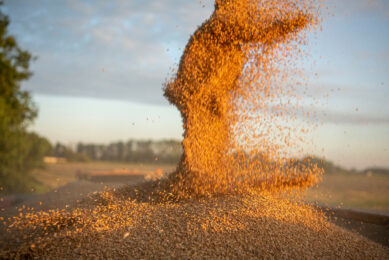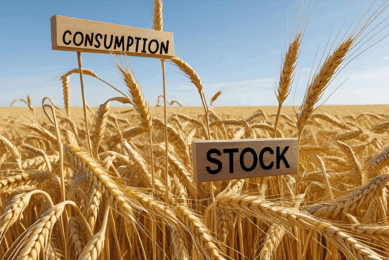Wheat supply is, and remains high

Geopolitical uncertainty in the Black Sea region continues to affect the commodity market.
Polish farmers protested this week, because much of Ukraine’s grain remained in Poland, causing an overabundance that led to losses for Polish farmers. And this action caused the grain prices to rise.
In response to the protests Poland imposed a temporary ban on Ukrainian grain last weekend, and later Hungary and Slovakia – which also experienced difficulties – joined in. At the beginning of this week it became clear that Poland and Ukraine have agreed on the transit of convoys of Ukrainian grain for export. This wheat also arrives at the Dutch border region via Germany. All in all, the offer is high and will remain so. Trading is therefore hesitant and fairly calm.
Russian wheat supply
On the world market, the Russian wheat supply is expected to remain good in both the short and long term due to improved weather conditions for the new harvest and the huge current stocks. The Russian wheat harvest for 2023 has been revised upwards to 86.8 million tons (+1.5 million tons) according to the Russian agricultural consultancy Sovecon due to favourable weather forecasts in the major agricultural regions.
Several factors continue to fuel the international grain market and keep prices volatile. For example, negotiations on the extension of the grain corridor across the Black Sea are still ongoing. It is not yet clear whether Russia will agree to an extension of the grain deal beyond May 18. Russia accused Ukraine of sabotaging the grain deal, Reuters news agency reported. Meanwhile, inspections in Turkey of cargo ships sailing to and from Ukrainian ports have resumed.
US grain market
In America, early this week, US wheat harvest figures supported wheat prices on the futures market. The conditions for winter wheat are disappointing. Last weekend, 27% of US winter wheat was rated as good to excellent, where the market assumed it would be at least 30%.
Furthermore, American arable farmers are lagging behind with the sowing of spring wheat. It had advanced 3% on April 16. A year earlier, around the same reference date, 8% of US spring wheat had been sown. Corn sowing in the Corn Belt — the region in the Midwest of the United States where most corn is produced — may also be delayed by adverse weather.











